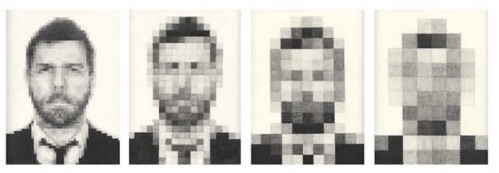
In an era defined by perpetual connectivity, identity has become a communicative performance mediated through digital infrastructures. To understand how individuals construct and sustain identity online, it is crucial to draw on the interactional and moral dimensions of communication theorised by Erving Goffman and Harold Garfinkel, as discussed in Paddy ScannellŌĆÖs┬ĀMedia and Communication┬Ā(2007), alongside the contemporary framework of mediatisation proposed by Nick Couldry and Andreas Hepp in┬ĀThe Mediated Construction of Reality┬Ā(2017). Together, these perspectives reveal identity not as a fixed possession, but as an emergent, negotiated, and deeply mediated accomplishment.
Erving GoffmanŌĆÖs dramaturgical model provides an enduring foundation for analysing self-presentation in digital contexts. In The Presentation of Self in Everyday Life (1959), Goffman conceptualised interaction as a performance sustained through front-stage and backstage behaviours. Every encounter, he argued, relies on tacit cooperation to maintain ŌĆ£faceŌĆØ and mutual respect. Scannell (2007) extends this view by emphasising that communication is not a mechanical act of message transmission, but a moral process through which social order is achieved. Applied to digital life, this perspective illuminates how users curate online personas through carefully managed performances, instagram posts, status updates, professional profiles, that uphold social intelligibility within platform-specific norms. The ŌĆ£interaction orderŌĆØ Goffman identified now extends into the digital sphere, where likes, comments, and algorithms replace physical gestures as cues for recognition and validation.
Harold GarfinkelŌĆÖs ethnomethodology further complicates this picture by showing how social reality is not pre-given but continuously reproduced through everyday practices. His concepts of reflexivity and indexicality emphasise that meaning depends on context and that communication both constructs and reflects the world. Online interaction exemplifies this reflexivity: digital users constantly interpret, adjust, and re-perform their identities based on feedback loops built into media platforms. Breaches of online etiquette-oversharing, misinterpreting tone, ignoring messages-reveal the fragility of these shared expectations, echoing GarfinkelŌĆÖs ŌĆ£breaching experimentsŌĆØ that expose the tacit moral rules underpinning ordinary communication.
Couldry and Hepp (2017) extend these sociological insights into a theory of mediatisation, arguing that media have become the infrastructural condition of social life itself. Communication is now profoundly mediated; it does not merely transmit identity but constitutes it. The self is constructed through digital logics of visibility, immediacy, and quantification-the metrics of followers, likes, and shares that define value within networked culture. These logics reconfigure what Goffman and Garfinkel saw as local, situational interactions into globalised, data-driven performances. The social world, Couldry and Hepp suggest, is now a ŌĆ£communicatively constructed worldŌĆØ where identity, truth, and belonging are continually negotiated through media systems that both enable and constrain expression.
In this digital condition, identity becomes both intensified and precarious. The constant demand for self-presentation erodes the boundary between front stage and backstage, while the permanence of online traces destabilises the very notion of situational performance. Yet even within these constraints, the moral and cooperative nature of communication persists: users still seek mutual recognition, respect, and intelligibility. Thus, the construction of identity in the digital world embodies the convergence of GoffmanŌĆÖs performance, GarfinkelŌĆÖs reflexivity, and Couldry and HeppŌĆÖs mediatisation, a dynamic interplay through which the social self is no longer merely represented, but continuously produced by the mediated interactions that define contemporary existence.
